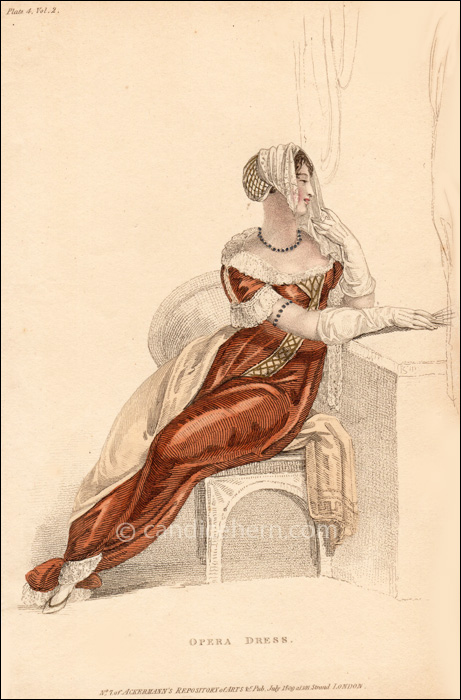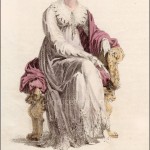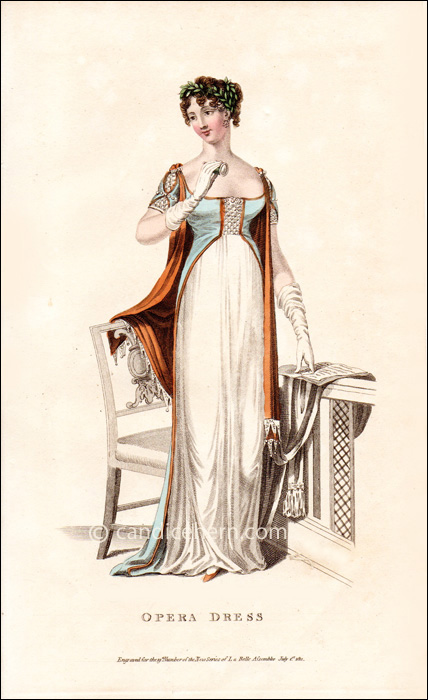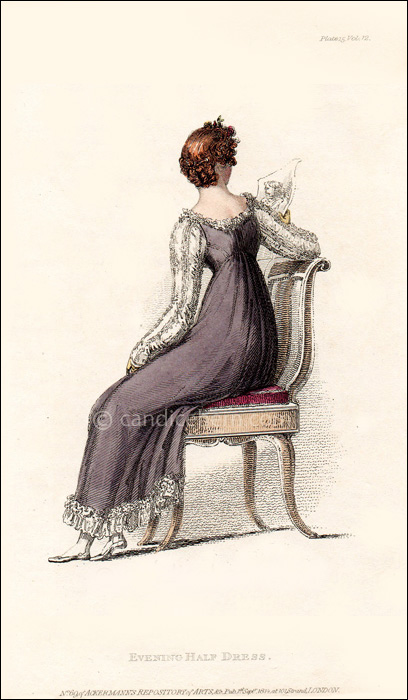Ackermann’s Repository of Arts, July 1809.
“Opera Dress”
 The description of the fabric of the robe sounds beautiful and must have been stunning in person. I’m not sure what makes it a “convent” robe. It doesn’t look much like something a nun would wear!
The description of the fabric of the robe sounds beautiful and must have been stunning in person. I’m not sure what makes it a “convent” robe. It doesn’t look much like something a nun would wear!
Note the armlet on the upper arm. There would have been one on the other arm as well, as they were always worn in pairs. Armlets were quite popular during the Regency, often paired with matching bracelets. The baggy gloves, shown here, that are allowed to fall below the elbow better emphasize the armlets.
The print is described in the magazine as follows:
“A round convent robe of Egyptian brown tissue, worn over a white satin under-dress, ornamented at the feet, and round the bosom and sleeves, with a broad antique lace, put on rather full, and brought to the narrowest dimensions in front of the bosom. White satin appliqued stomacher, embellished with gold lattice work, and continued in a straight line down the front of the robe to the feet. Head-dress a gold net caul, inclosing the hair behind, and finished in front with a Mechlin veil of uncommon delicacy, disposed in a graceful negligence, so as to display the hair on the forehead, and falling over the left shoulder. Necklace and armlets composed of a single row of fine Bohemian pearl, with topaz or diamond snaps. A Grecian scarf of rich Andalusian silk, happily contrasted with the colour of the robe, and wrought at the end with a deep Tuscan border of gold or coloured silks. White satin slippers, trimmed with brown foil or gold. Gloves of French kid. Opera fan of white crape, decorated with a border of jessamine.”







